20 Green Design Features for Buildings

There is a common misconception that building green means assuming higher costs to protect the environment. Actually, green design is an excellent financial decision: it lowers the lifetime ownership cost of a building, while reducing its environmental footprint.
Green construction boosts corporate image, and companies are more likely to attract clients who give high priority to sustainability. In the case of real estate developers, a green building will be appealing for tenants who share those values.
This article will describe 20 green design features for buildings, which reduce emissions and waste while offering an attractive return on investment. For each green design feature described, we will provide general information about cost, space requirements, savings and payback period. Note these are broad estimates, and project costs can vary depending on building conditions.
Get a green building design, and save thousands of dollars in energy and water bills.
To describe the performance of green design features, we will assume a 100,000 sq. ft. apartment building with the following characteristics:
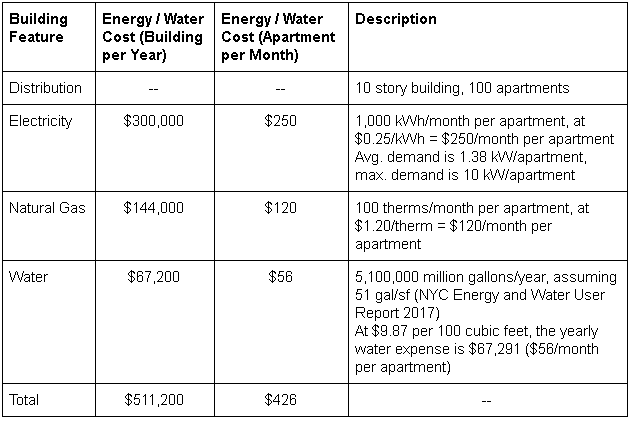
Gas, electricity and water bills add up $42,600/month, or $511,200/year.
1. Cogeneration
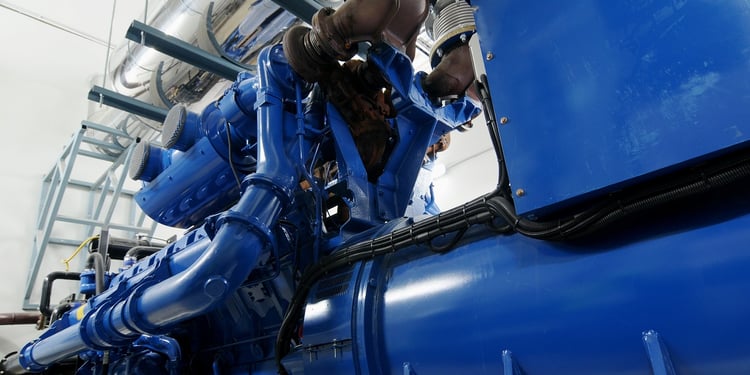
Exotic Level: 5 / 5
Cost: $1.4M (200 kW microturbine, $3,000/kW material cost, $7,000/kW total installed cost)
Space Requirement: 400 sf room
Energy Savings: $195,000 / year
Payback: 7-8 years
Cogeneration is also known as combined heat and power (CHP), and it consists of producing electricity and heat simultaneously. Many generation methods release heat as a secondary product, which is normally wasted. However, this heat can be recovered and used for applications like space heating, water heating and industrial processes.
Cogeneration equipment can be classified into two main types: micro-turbines and reciprocating engines. Both rely on natural gas combustion to drive the generator, and heat is recovered from engine cooling water and exhaust gases.
| PROS | CONS |
|
1) Lower electricity and heating expenses, compared with relying 100% on utility services. 2) The cogeneration system can be used as an emergency generator, combining two pieces of equipment in one. |
1) Complex and expensive system. 2) Only viable in facilities that require plenty of heating. If this is not the case, relying on utility services may be cheaper. |
Hotels and hospitals are some examples of building types where cogeneration is viable. It is also possible to drive an absorption chiller with waste heat, deploying a concept called trigeneration - simultaneous electricity, heating and cooling.
2. Fuel Cells
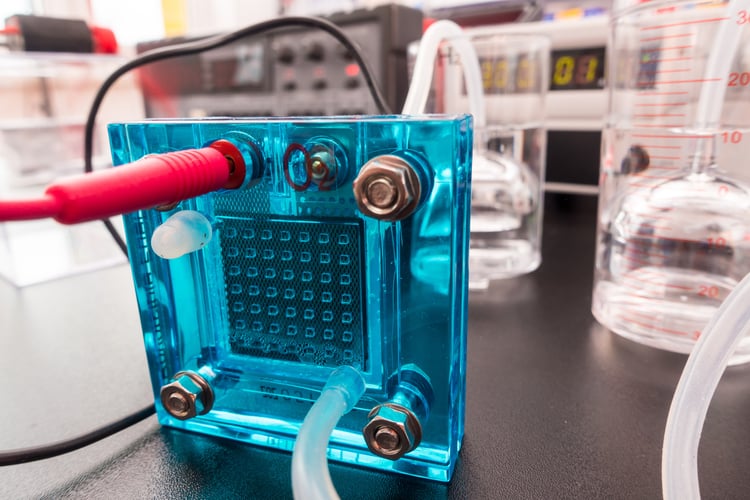
Exotic Level: 5 / 5
Cost: $2 M typical cost, $1.46 M after 26% federal tax credit (200 kW unit, $8000/kW material cost, $10,000/kW installed cost)
Space Requirement: Typically less than 200 sq. ft.
Energy Savings: $180,000/year
Payback: 8 years
Fuel cells produce electricity and heat from a chemical reaction, and some types can also be used as energy storage devices. Like cogeneration systems, fuel cells are cost-effective when the heat and electricity outputs can both be used continuously.
Unlike batteries, which contain the reagents that produce electricity, fuel cells use an external source and cannot be “discharged”. The reaction can continue indefinitely as long as the reagents are supplied.
| PROS | CONS |
|
1) Compact and lightweight. 2) Some types can be used for energy storage, complementing renewable power systems with variable output (solar panels and wind turbines). |
1) Financial viability can be affected if the price of the input fuel becomes volatile. 2) Maintenance is complex and requires specialized labor. |
There are many fuel cell compositions, and two emerging types are very promising: solid oxide fuel cells (SOFC) and hydrogen fuel cells. The Bloom Energy Server is an example of a commercially available SOFC, which has been used with success by tech giants like Google, Yahoo and eBay.
3. Solar Photovoltaic Panels
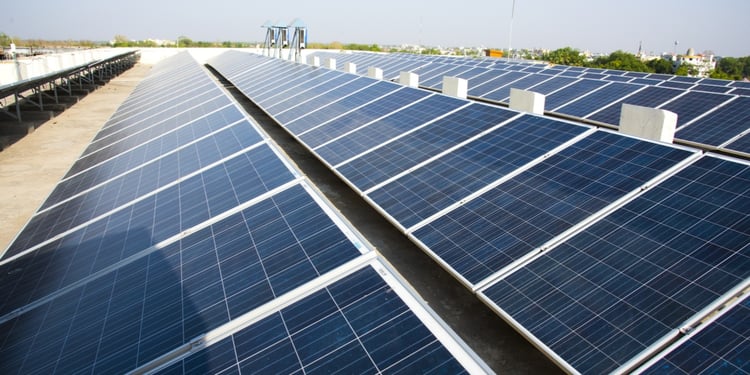
Exotic Level: 3 / 5
Cost: $400,000 for a 120-kW system (around $296,000 after 26% tax credit)
Space Requirement: Around 10,000 sq. ft. of rooftop area (12 watts/sf roof area)
Energy Savings: $44,000 per year
Payback: 6-7 years, can be less with state or utility company incentives
A solar power system can be an excellent investment, especially if you have a building with plenty of roof area. Quality solar panels normally come with a 10-year warranty against manufacturing defects, and a 25-year warranty against loss of generation, which applies if productivity falls below 80% before 25 years. Some manufacturers may offer improved warranty terms.
The US offers a 26% federal tax credit for solar panels in all states, which will be available until the end of 2022.
- In other words, homes and businesses can deduct $260 from their federal taxes for every $1000 invested in solar power.
- The tax credit will be reduced to 22% in 2023, and in 2024 it drops to 10% for businesses and 0% for homeowners.
- The federal tax credit can be combined with local rebate programs and state tax credits, making solar power even more affordable.
The Tesla solar roof is a promising innovation, with adds solar cells to roof shingles. They are expensive to use in existing buildings, since you have to replace the roof. However, the concept is viable in new constructions, where there is a baseline roofing cost anyway.
| PROS | CONS |
|
1) The payback period of solar panels only represents a small fraction of their service life. Your ROI is assured thanks to the warranty. 2) Simple maintenance, where the main requirement is keeping panel surfaces clean and free of shadows. 3) May be eligible for incentives from the government or utility companies. |
1) Power generation depends on sunlight. It ceases at night and is reduced drastically with cloudy weather. 2) Finding space may be a limitation in some buildings, due to Fire Department clearances and rooftop mechanical equipment. |
4. Solar Thermal Collectors
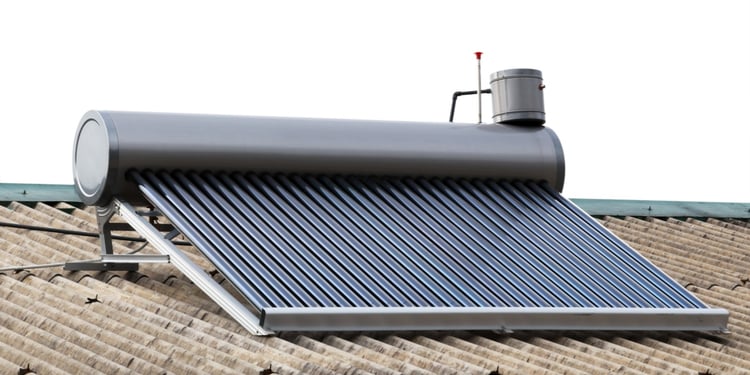
Exotic Level: 2 / 5
Cost: $200,000 ($2,000 per dwelling), $148,000 after 26% federal tax credit
Space Requirement: 10,000 sq. ft. of rooftop area (same as solar panels)
Energy Savings: $20,000 per year
Payback: 7-8 years
A solar collector is a viable alternative to photovoltaic panels, with smaller savings but also a lower upfront cost. In this case, solar radiation is used for water heating instead of electricity generation.
When a building has solar collectors, occupants can rely less on gas-fired or electric water heaters. There may be a minor pumping cost in taller buildings, since water has to reach the roof, but it is much less than the ongoing cost of a water heater.
| PROS | CONS |
|
1) Financially viable: Offers free heating when sunlight is available. 2) Simple installation and maintenance. |
1) No heating at night and limited effectiveness during winter. You need another heating system as backup. 2) Competes with solar panels for rooftop area. If space is a limitation, solar panels tend to offer a better ROI. |
5. Central Chiller Plant
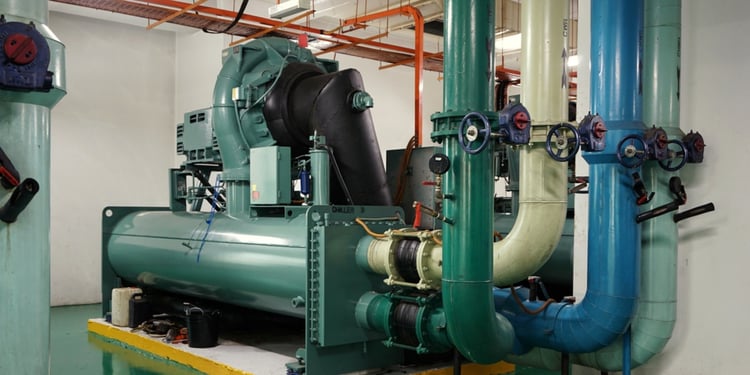
Exotic Level: 3 / 5
Cost: $2 M
Space Requirement: 1500 sq.ft. room
Energy Savings: $187,800 per year
Payback: 10-15 years
Chillers are among the most efficient air conditioning systems for buildings, especially water-cooled chillers connected to cooling towers. Some modern units are even equipped with AI, and can adjust their cooling output dynamically to match building needs.
Chiller plants can achieve significant economies of scale, concentrating air conditioning in a single location, and making it as energy efficient as possible. Space cooling is achieved with hydronic piping loops and fan coils, and the system becomes even more efficient when pumps and fans are controlled by variable frequency drives (VFD).
| PROS | CONS |
|
1) Chiller plants provide one of the most efficient air conditioning options. 2) Achieving synergy with other energy efficiency measures like VFD units for fans and hydronic pumps. |
1) High upfront cost, and requires a dedicated area for chillers and their complementary systems. 2) A centralized design means the entire building can be left without AC if a key component fails. |
6. Geothermal Heating and Cooling
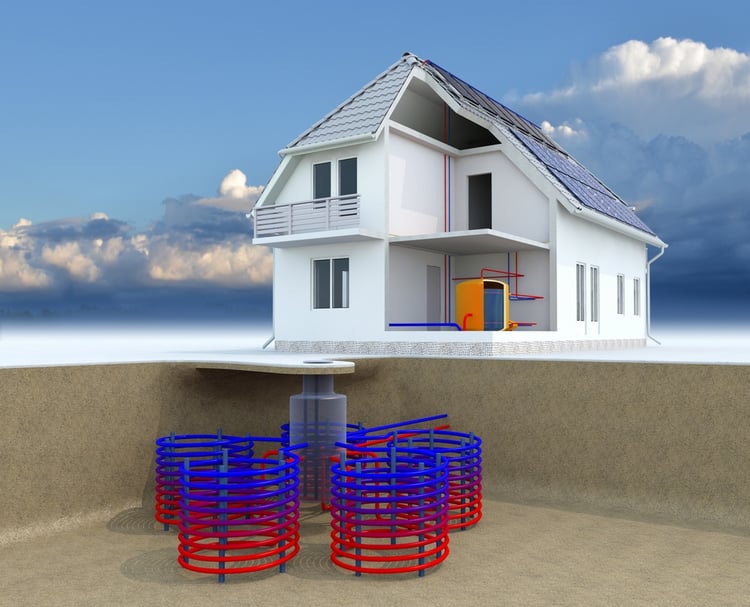
Exotic Level: 4 / 5
Cost: $3.33 M, $3 M after 10% federal tax credit ($10,000 per ton of capacity, 300 sf per ton, one well per ton, 333 tons for this building)
Space Requirement: Same as a conventional chiller, boiler or furnace
Energy Savings: $105,000 per year
Payback: 18-25 years
The ground is an excellent heat sink during summer and heat source during winter. Geothermal heat pumps take advantage of this, providing heating and cooling for buildings with a lower kWh consumption than other systems.
Indoor heating and cooling are achieved with hydronic piping, air handling units (AHU) and ducts. The geothermal heat pump uses a secondary water loop that goes underground, to collect or reject heat as needed.
| PROS | CONS |
|
1) Geothermal heat pumps are among the most efficient heating and cooling systems for building interiors. 2) Can provide heating for the same cost as natural gas (or even less), while eliminating the associated emissions. 3) The well field eliminates the need for a cooling tower and boiler. |
1) Expensive system that requires specialized maintenance. 2) Not all buildings have suitable underground conditions for a geothermal heat pump. 3) Drilling 200 ft deep wells of pipe in lieu of a simple cooling tower and boiler is a more costly alternative. 4) Geothermal wells must be spaced about 15’ apart, so a well field to handle this building is approximately the size of a football field. |
7. Rainwater Harvesting
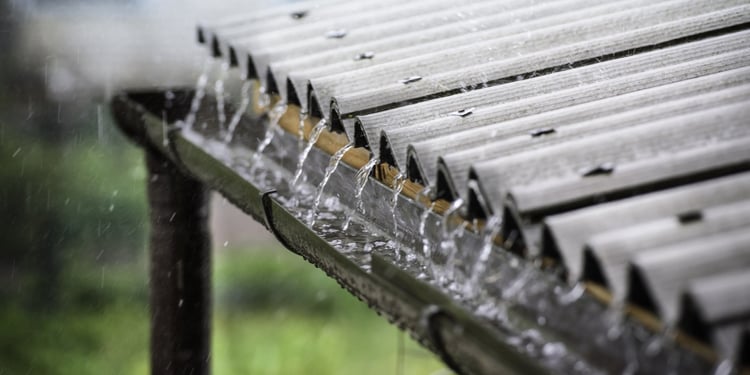
Exotic Level: 3 / 5
Cost: $30,000 for a 10,000-gallon system
Space Requirement: 10,000 gallon tank, 141” diameter and 160” height
Water Savings: $3,200 per year
Payback: 9-10 years
Humanity has collected rainwater for centuries, but the concept gained more importance in the modern world, especially in places with a limited water supply. Rainwater harvesting requires a collection method and a storage system, and all the water retained is subtracted from your utility bill.
In densely populated areas like NYC, rainwater harvesting also reduces the water volume handled by the sewers during a storm, preventing spillage. A single building with rainwater harvesting does not have a major impact, but effect adds up when many property owners have deployed it.
| PROS | CONS |
|
1) Free water supply. 2) Reducing the water discharge handled by sewers during a storm. 3) Retrofitting existing properties with rainwater harvesting is relatively simple. |
1) Does not provide a continuous water supply during the year, since it depends on rainfall. |
8. Greywater/Blackwater Recycling
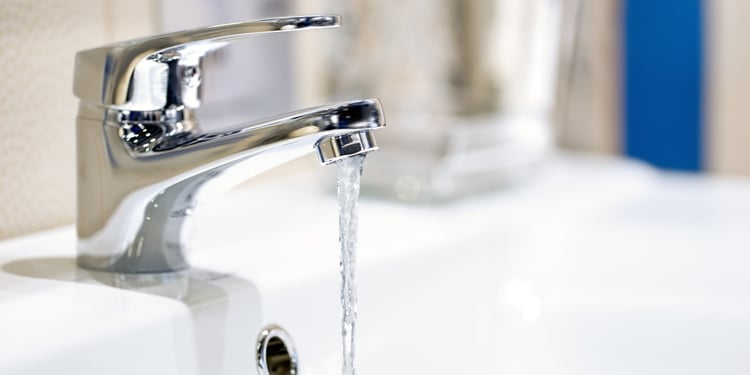
Exotic Level: 4 / 5
Cost: $200,000 ($2,000 per dwelling)
Space Requirement: One 250 gal tank per dwelling, 36” diameter and 66” height
Water Savings: $20,000
Payback: 10-12 years
The concepts of greywater and blackwater are used to describe water that has already been used in plumbing fixtures. Blackwater includes water from all fixtures, while greywater excludes the water discharged from toilets.
Although greywater is polluted with cleaning agents and grease, it can be collected for purposes such as flushing toilets or outdoor watering. Blackwater can also be recycled for some purposes, but it requires special treatment.
| PROS | CONS |
|
1) Reduced water bills: Less water is drawn from the municipal supply when the same water is used for various purposes. 2) Decongesting the public sewage. |
1) May not be practical in existing properties where greywater is not separated from blackwater. 2) Blackwater recycling requires an expensive treatment system. |
Greywater and blackwater separation is easier in new constructions, since the plumbing system has not been installed. Water recycling is more challenging in existing buildings, especially if the water discharged from all fixtures is combined with toilet discharge.
9. LED Lighting
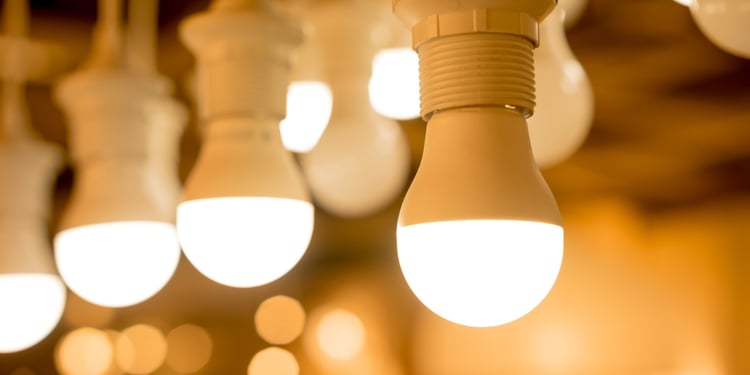
Exotic Level: 1 / 5
Cost: $102,000
Space Requirement: No additional space, replaces existing lamps and fixtures
Energy Savings: $39,000 per year
Payback: 2-3 years
LED lighting is among the most cost-effective building upgrades, offering a quick payback and a long service life. In addition, lighting savings are subtracted from the space cooling load, saving on air conditioning. LED lamps also offer a much longer service life than incandescent, fluorescent and HID lamps, which means replacements are less frequent.
| PROS | CONS |
|
1) Major electricity savings: 30-50% less than fluorescent, 50-80% less than HID, 80-90% less than incandescent. 2) Reduced cooling load for air conditioning and refrigeration equipment. 3) Long service life and low maintenance. |
1) High upfront cost. 2) Some people prefer the warm glow of incandescent and halogen lights, but this can be solved with LEDs that mimic them. |
10. Daylighting
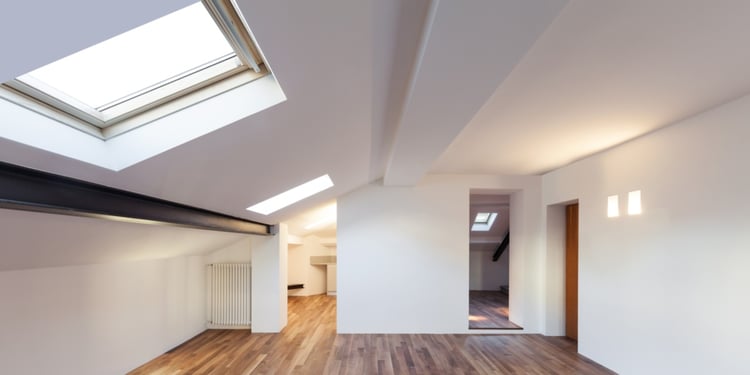
Exotic Level: 3 / 5
Cost: $10,000 for five skylights in the upper floor
Space Requirement: No additional space
Energy Savings: $2600 per year
Payback: 3-4 years
LEDs provide lighting at a low cost, but only sunlight is free. Daylighting consists of maximizing the indoor use of sunlight while preventing its two negative effects:
- Glare, which is the visual limitation that occurs when the sun is directly visible.
- Solar heating, which increases the load on air conditioning equipment.
Glare and solar heating can be controlled by optimizing window positioning, and skylights can be used in single-story constructions or the upper levels of multi-story buildings.
| PROS | CONS |
|
1) Free lighting. 2) Windows and skylights have very simple maintenance requirements. |
1) Unavailable at night. 2) Potential for glare and unwanted solar heating. |
11. Occupancy-Sensing Lighting Controls
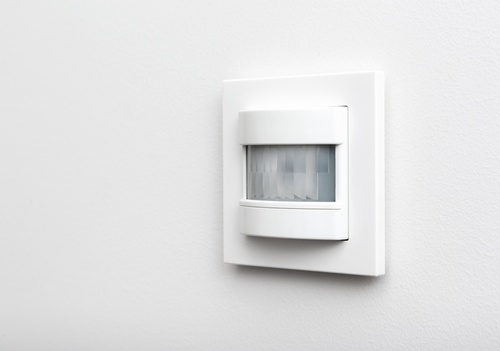
Exotic Level: 2 / 5
Cost: $4,500 for 30 sensors throughout the building ($150 each)
Space Requirement: Minimal, same size as smoke detectors and wall switches
Energy Savings: $5,250 per year
Payback: Less than one year
LED lighting sometimes has a rebound effect. Since occupants are aware that the lights are more efficient, they can become careless and leave them on more frequently. Occupancy sensors can solve this issue, making sure the lights are only on when needed.
| PROS | CONS |
|
1) Synergy with LED lighting, enhancing the savings achieved. 2) Occupants don’t have to worry about switching the lights on and off. |
1) Increases the cost of lighting systems. 2) Compatibility issues may arise when many types of lighting are used. |
Occupancy sensors can be combined with other lighting controls for further energy savings. For example, they can be complemented with dimming systems that respond to daylight - the lights are only used at full brightness when there is no natural lighting.
12. Passive House
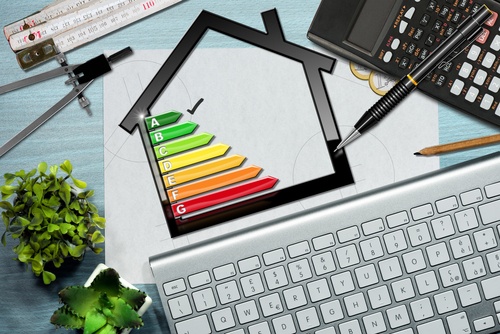
Exotic Level: 5 / 5
Cost: An additional 10% of overall building cost, $3.62 M for a 100,000 sq.ft. construction
Space Requirement: Building size is not affected
Energy Savings: $333,000 per year
Payback: 10-15 years
Passive House construction comes from Germany (Passivhaus), but it applies for all types of buildings in spite of the word “house”. A passive house building is based on maximizing natural ventilation and using high-performance insulation, to reduce HVAC expenses significantly or eliminate them fully.
Passive house construction also optimizes the solar heating effect, preventing it during summer and maximizing it during winter. Any HVAC system used is combined with energy recovery measures, to further reduce operating costs.
| PROS | CONS |
|
1) Major energy savings, which may exceed 75% compared with conventional buildings. 2) Exceeds the performance level required by most energy codes. |
1) Makes the building project more expensive by 5-10%. 2) Limited use in existing constructions, since the envelope has already been built. |
13. Energy Recovery Ventilation
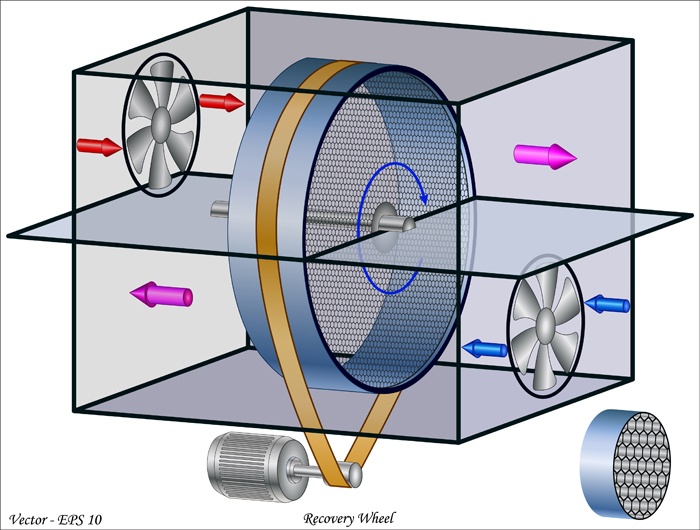
Exotic Level: 3 / 5
Cost: $150,000 ($1,500 per dwelling)
Space Requirement: Minimal, installed on air ducts
Energy Savings: $34,000 per year
Payback: 4-5 years
Indoor air must be renewed constantly to keep adequate conditions for occupancy. However, there is an energy cost when outdoor air replaces indoor air.
- During summer, intake air is often warmer and moister than exhaust air.
- The opposite happens during winter: intake air is cooler and drier.
Some energy can be saved by exchanging heat and moisture between both air streams, reducing the HVAC load. This concept is called energy recovery ventilation, and there are two types: heat recovery ventilation (HRV) only exchanges heat, while enthalpy recovery ventilation (ERV) exchanges both heat and moisture.
| PROS | CONS |
|
1) Meeting the same heating and cooling loads with lower HVAC running costs. 2) Electricity and gas savings. |
1) Only effective under certain weather conditions. 2) Maintenance becomes more complex. |
14. Low-Flow Plumbing Fixtures
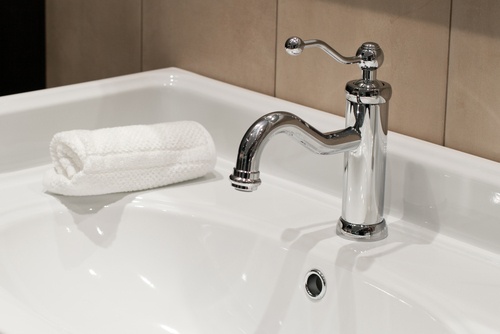
Exotic Level: 1 / 5
Cost: $90,000
Space Requirement: No additional space, they replace existing fixtures
Energy Savings: $13,500 per year
Payback: 7-10 years
Water conservation not only reduces the corresponding bill, but also the operating cost of the hot water system. The US Environmental Protection Agency manages the WaterSense labeling program, which promotes the use of low flow plumbing fixtures.
A quick way to reduce water consumption is by upgrading plumbing fixtures to their efficient versions. In addition, there is no need to modify the piping embedded in walls or floor slabs.
| PROS | CONS |
|
1) Reducing water bills and heating expenses. 2) There are also pumping savings if the building relies on a booster pump. |
1) If the existing fixtures and piping are very old, the replacement procedure may damage piping. |
15. Micro Wind Turbine
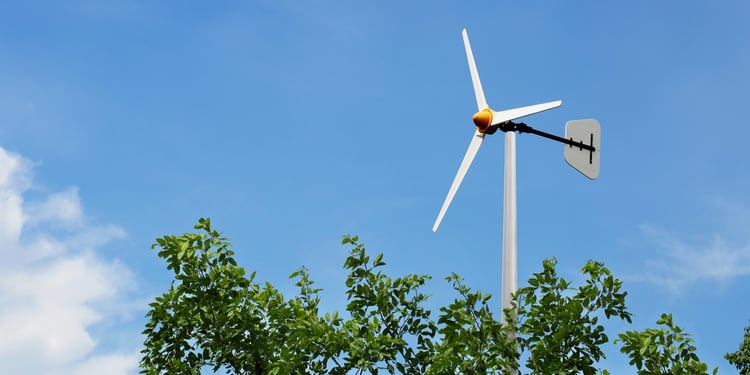
Exotic Level: 5 / 5
Cost: $400,000 for a 100 kW turbine installed ($296,000 after the federal tax credit)
Space Requirement: 3,000 - 4,000 sq. ft. of clearance around the turbine
Energy Savings: $43,800 per year
Payback: 7-10 years
Although solar panels are easier to install and service, wind power can be cost-effective if your site has the right conditions. Being a renewable energy source, wind power also benefits from incentives.
Most properties do not have enough space for a utility-scale wind turbine. However, it makes sense to use one larger unit instead of many smaller units:
- A single turbine results in a lower cost per kilowatt (economies of scale).
- Electricity generation is enhanced with a taller tower, since airflow is more stable as height increases.
- On the other hand, smaller turbines are close to the ground and susceptible to the turbulence caused by trees and constructions.
| PROS | CONS |
|
1) Electricity savings, zero generation cost after the payback period. 2) May be eligible for incentives from the government or utility companies. 3) Wind power complements solar power, since it depends on a different energy input. |
1) Demanding in terms of site conditions. Not all properties are suitable for wind power. 2) Neighbors may be concerned about noise or visual impact. 3) More complex maintenance than solar power. |
16. HEPA Air Filtration
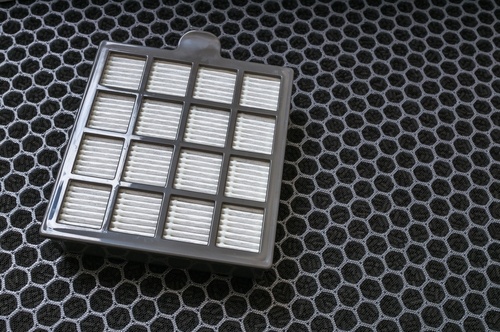
Exotic Level: 3 / 5
Cost: $45,000
Space Requirement: 30% larger filter boxes on any outside air intakes
Energy Savings: Does not apply, since the purpose is improving air quality.
Payback: Does not apply.
HEPA stands for high efficiency particulate air or high efficiency particulate arrestance. These filters are highly effective, capturing 99.97% of particles with a size of 0.3 microns or more. They can remove germs and pollutants from the air, improving indoor air quality.
| PROS | CONS |
|
1) Simple to install and compatible with many types of HVAC equipment. 2) Contributes to occupant health by removing harmful particles. |
1) Causes a slight increase in the fan power required, since the filter itself causes an air pressure drop. |
17. Peak Electric Load Shifting
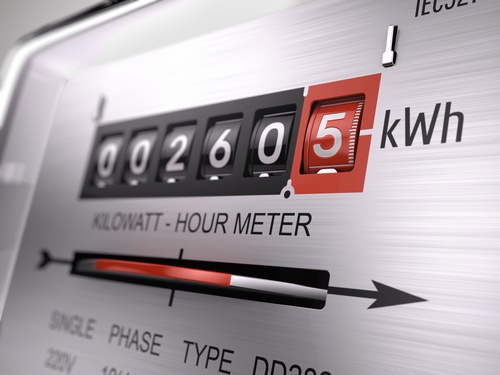
Exotic Level: 4 / 5
Cost: $200,000
Space Requirement: 5’ x 5’ for a 100 kW system
Energy Savings: $24,000 per year
Payback: 8-9 years
Depending on how your power bill is structured, electric load shifting may reduce the dollar amount billed, even if the total kilowatt-hour consumption stays the same.
- Some electricity tariffs have a higher kWh price during peak demand hours. If this is your case, the power bill can be reduced by moving consumption to off-peak hours.
- Large consumers are charged for the highest demand measured in the billing period, regardless of when it occurs. In these cases, demand must be monitored continuously to prevent consumption peaks.
There are many ways to cut peaks in demand. Loads that are not time-sensitive can simply be turned off, and energy storage systems can help power the loads that are necessary. Note that electricity consumption peaks are not billed if they are supplied with internal energy resources:
- Batteries can be used to power electric loads.
- Ice storage can be used for cooling, turning off refrigeration and air conditioning systems during peak demand hours.
| PROS | CONS |
|
1) Reducing electricity bills, even if total energy consumption stays the same. 2) Peak shaving systems can often be used as energy storage as well. |
1) Only possible with certain tariffs. Load shifting only provides savings when there are time-of-day rates or peak demand charges. |
18. CO2 Controlled Ventilation
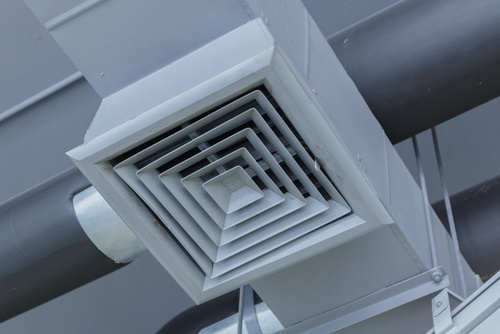
Exotic Level: 3 / 5
Cost: $233,000
Space Requirement: Minimal, involves adding compact sensors and control devices
Energy Savings: $47,500 per year
Payback: 4-5 years
Ventilation systems are normally designed based on two values: square footage and the number of occupants. This means that the total airflow in cubic feet per minute (cfm) is based on cfm/sf and cfm/person. However, many ventilation systems keep their maximum airflow even when the area served is not full, and this represents a waste of power.
Since the human metabolism produces carbon dioxide, occupancy can be correlated with the CO2 concentration in the air. Ventilation can be controlled with CO2 sensors, reducing airflow based on occupancy to save energy.
| PROS | CONS |
|
1) Reducing electricity consumption from ventilation systems. 2) Indoor air quality is not affected, since the design airflow per person is maintained. |
1) Higher upfront cost compared with a conventional ventilation system. 2) Control devices cause some distortion of the power supply (harmonics). |
19. Economizer Mode for Air Conditioners
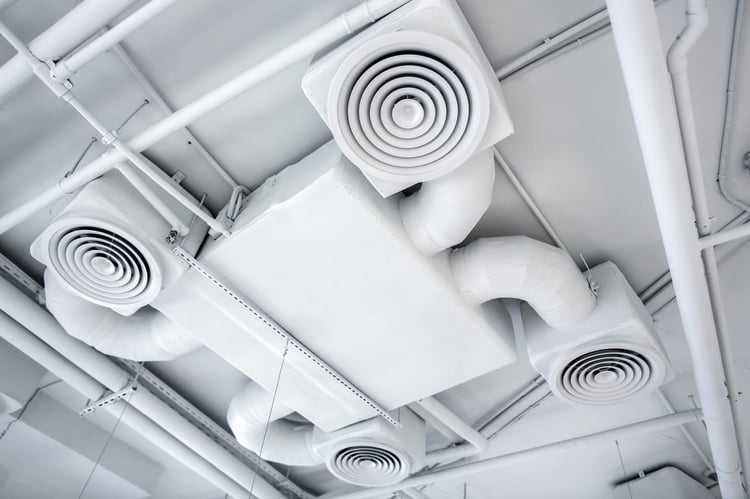
Exotic Level: 3 / 5
Cost: $50,000
Space Requirement: Doubles size of each air handler with ducting and controls
Energy Savings: $19,500 per year
Payback: 2-3 years
In some climate zones, weather conditions are suitable for “free air conditioning” during some times of the year. In these cases, a constant supply of outdoor air has the same effect as air conditioning, and compressors can be turned off to save energy. While there is an increase in fan power, the air cooling savings are much higher.
This operation mode is available when the HVAC system has an airside economizer. In some jurisdictions, including NYC, economizers are required by the energy code.
| PROS | CONS |
|
1) Saves electricity by reducing the air conditioning runtime. 2) Indoor air quality is not affected. |
1) Additional expenses: upfront cost and maintenance. 2) Not suitable for all climate zones. |
20. Variable Frequency Drives on Fans and Pumps
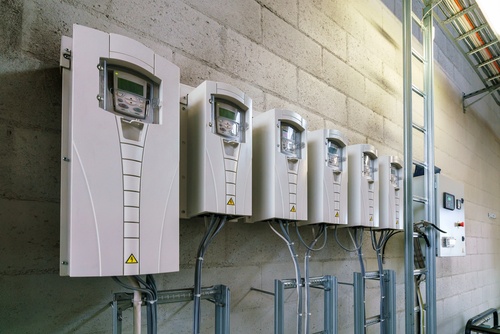
Exotic Level: 3 / 5
Cost: $38,850
Space Requirement: Minimal, most are smaller than a residential distribution board
Energy Savings: $16,000 per year
Payback: 2-3 years
Variable frequency drives are electronic devices that adjust the voltage and frequency supplied to motors, reducing speed below their rated rpm. VFDs are very useful in fans and pumps, since these devices are often subject to part-load. VFDs are also known as variable speed drives or VSDs.
When the full output of a pump or fan is not required, two control strategies are common:
- The water flow from the pump (gpm) can be controlled with a series valve at the discharge.
- Alternatively, the average airflow from a fan (cfm) can be controlled with intermittent operation. For example, to achieve an average airflow of 800 cfm with a 1000 cfm fan, it can run 80% of the time.
When using a VFD in a pump, the discharge valve can be fully opened to eliminate the power loss due to the pressure drop. For fans, reducing speed saves much more energy than reducing runtime - a fan at 80% speed consumes less electricity than a fan running at full speed 80% of the time.
| PROS | CONS |
|
1) Saving on ventilation and pumping. 2) Synergy with other energy efficiency measures such as CO2-based ventilation control. |
1) Provides no benefit in motors that must operate at rated speed all the time. 2) Slight distortion of the power supply (harmonics). |
Conclusion
Green construction is a broad topic, and there are many design features available for building owners. Depending on project conditions, some measures may achieve better results than others. However, building green is a proven way to save energy and water, while reducing the environmental impact of cities.
The first step to save energy is knowing how your building uses it. NY Engineers can analyze your consumption with energy modeling: call (786) 788-0295212-575-5300 or write at info@ny-engineers.com.

Michael Tobias
Michael Tobias, the Founding Principal of NY Engineers, currently leads a team of 150+ MEP/FP engineers and has led over 4,000 projects in the US
Join 15,000+ Fellow Architects and Contractors
Get expert engineering tips straight to your inbox. Subscribe to the NY Engineers Blog below.

